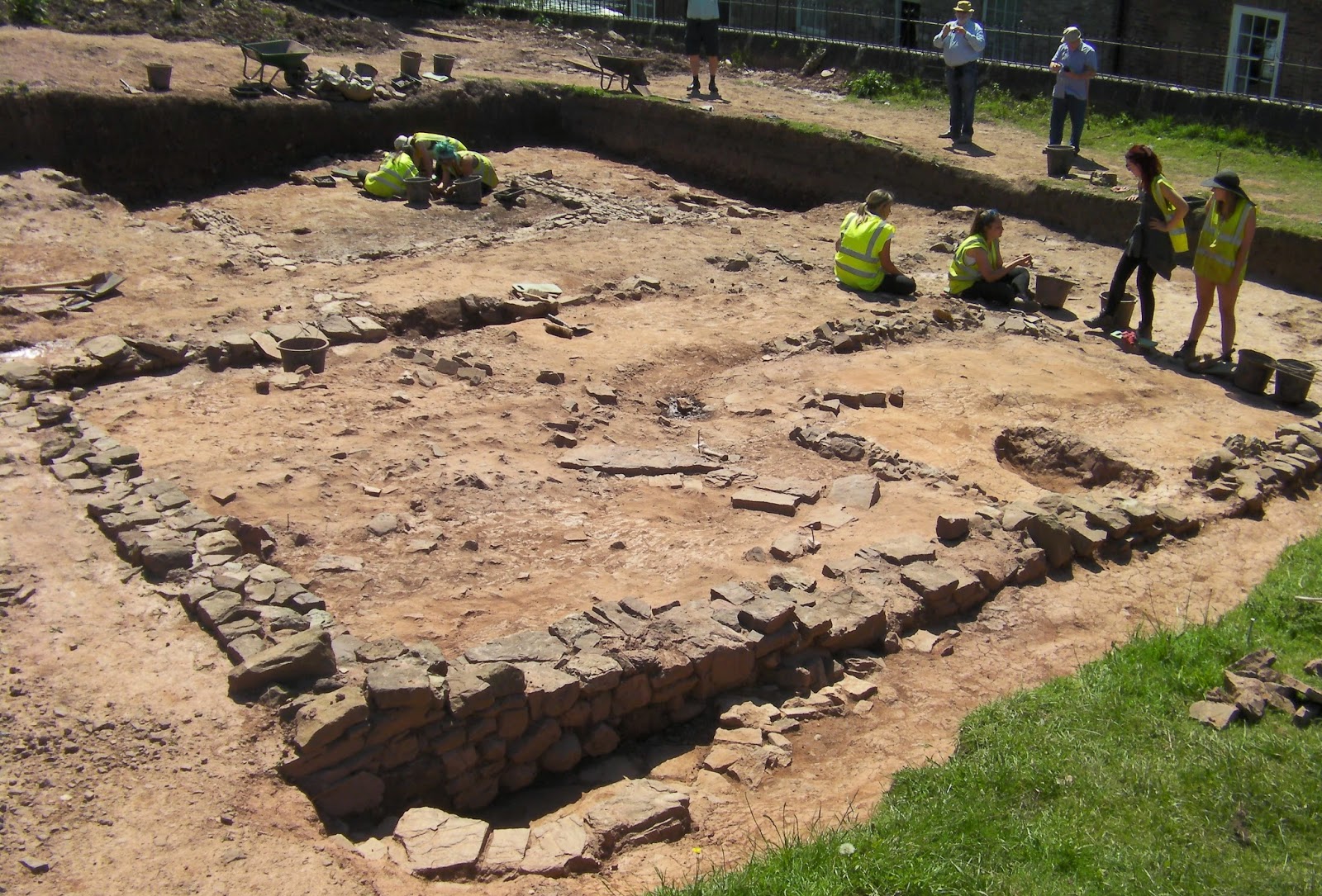Thank you, and good night!
So this is it: the end of the 2014
Berkeley season and what a year we have had. This has been a year of
discoveries, re-interpretations and, as per usual - fun!
High Street end of Trench 8
The main trench in the Paddock - Trench 8 has seen enormous progress on all four corners. At the High Street end of
the trench we appear to have uncovered the remains of a Tudor tavern out-building.
This building, along with the tavern (that we believe is somewhere under the
spoil heap), appear to have been destroyed during the civil war to defend the
castle from attack by creating clear lines of sight. Pits that were dug inside the out-building contained, amongst other things, industrial waste which makes us wonder whether this may have been a light industrial area
attached to the tavern? We look forward to further excavating this area next year to see where
this takes us and are enormously thankful to our students who have, in this
space alone, moved over a tonne and a half of mortar, brick and building
material in order to uncover this structure.
Also at the High Street end is the ‘Norman House’ - which is no longer
Norman after the discovery of Tudor pottery underneath one of the walls. This
certainly threw the cat amongst the pigeons! The dating material from an
adjacent building seems to indicate now that this is a Tudor or later extension to an earlier, possibly Saxo-Norman building. One wall of this earlier structure has evidence for a drain which may
have belonged to a neighbouring house and the relatively thin walls
may indicate that this is a half-timber house. Again, we look forward to coming
back next year to continue our research in this corner of the trench.
Team 'Ditch-Squad' working away to get the ditches bottomed and the area clean
At the other end of Trench 8, we have a series of ditches and pits that have been excavated over the past few years - the complexity of this sequence we are only now beginning to comprehend. The pits appear to be Medieval, from the presence of 12th
century pottery and a bronze Medieval strap end, and cut through a 3-ditch sequence. The central ditch of this sequence measures about 2m wide with a bit of an ankle-breaker base which makes us think that this one was constructed for defensive reasons, whereas the other two are much shallower and may have been for drainage or delineate a boundary? We think that these ditches range from Saxon to early Norman in date due to the presence of a Saxo-Norman rim sherd in the large, central ditch. Overall, there is a high density of truncation by intercutting features across this area, indicating the high level of human agency that occurred.
Issie and Alex digging a slot through the largest ditch in the sequence
In addition to the progress in
the paddock, students from the University of Bristol, led by Jack Fuller,
have produced exhibition pieces for the Jenner garden and Museum and for
Berkeley Castle. These exhibition pieces display finds and interpretations from
the university’s excavations over the last ten years. The Jenner exhibition opens
to the public next week and the Castle’s exhibition will open during Berkeley’s
Festival of Archaeology which runs from the 12th-16th of
July.
University of Bristol post-graduate student Jim Pimpernell has continued his PhD research into the development and evolution of the tenancy of the
Berkeley estate and works closely with the castle utilising their fantastic archival
collections.
Geo-fizz work on the freshly mown fields surrounding Berkeley Castle
And finally, all is not completely over for 2014! We have the Berkeley Summer Field School happening in August. So keep on coming back for our exciting updates. Thank you,
and good night.
Goodbye from beautiful Berkeley!





Comments
Post a Comment